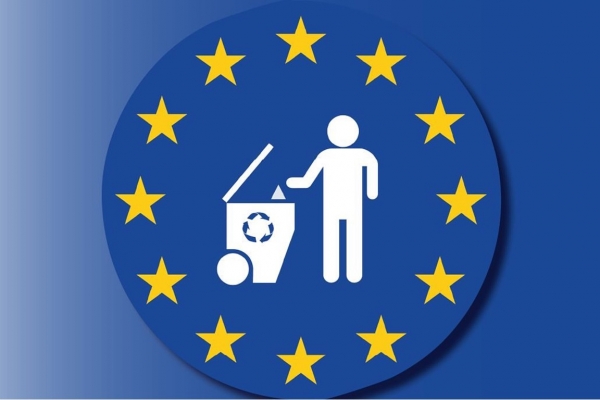The recycling situation in the EU
Posted: 27 January 2022

Has anyone ever told you that some packaging solutions should not be used in certain countries because their recycling infrastructure cannot handle them? Probably not, because no one really thinks about that. However, there are big differences between countries and therefore, we think this is something that should be talked about more often. One way of getting an idea about the recycling situation in a specific country is by checking a country’s recycling rate. Recycling rate means how much of the total waste produced is successfully recycled. Note that it should not be confused with the collection rate which simply indicates how much of the waste is collected by the waste management system instead of being disposed of in nature. In this article, we are focusing on recycling rates and more specifically why these are different across the European Union, why some materials have higher rates, and which markets you need to be careful with regarding the recycling probability of your product’s packaging!
Why are there differences in waste management across EU member states?
For a market such as the European one, you might expect that waste management systems would be harmonized. Well, this is not the case, not by far. While the EU does have overarching regulations such as the Packaging & Packaging Waste Directive and the Waste Framework Directive (where the Extended Producer Responsibility (EPR) is regulated), the recycling rates across the different EU member states tend to vary greatly. One possible explanation for this could be that waste management is in general a difficult topic, economically, logistically, and politically and it is not something that can be adapted quickly. Efficient collecting and recycling systems are expensive to establish and require robust logistics. Making it attractive to recycle certain materials usually requires a balancing in costs, meaning that the recycling process should be at least the same or cheaper than buying extracting virgin materials. This is unfortunately not the case for many materials. Not to mention that demand for using recycled materials in products is needed. If no one wants to produce products with them, then why invest in their recycling?
Recycling rates of different materials
Luckily enough, the average EU recycling rates of paper and cardboard (82.3%), metals (78%), and glass (76.3%) were high in 2020. Metal and glass can be recycled an infinite number of times without losing their quality, making them a very worthwhile investment for countries to recycle.
Aluminium, the most common material for metal packaging, is just one uniform material that is easily recognized as metal by consumers and therefore it often finds its way into the correct collection point. The same goes for glass, rarely do you mistake a glass bottle for anything else, so it is regularly disposed of in the appropriate bin and sorting stream. Even though the quality of paper and cardboard does decrease as the fibers go through each recycling process, the recycling rate is still high. Reasons for this are that the recycling process of paper and cardboard is relatively simple compared to other processes and the collection and recycling infrastructure has already been in place for a very long time.
But what about plastic? Plastic is of course the elephant in the room when it comes to the discussion of recycling. Its average recycling rate in the EU lies at only 41%. The reasons for this are numerous. One big difference to the other materials is that there is not one uniform material plastic but it is rather a group of materials needing different recycling processes. Summarized, some of the common causes are:
- Recycling has a cost, and demand needs to meet supply. In theory, EPR (extended producer responsibility) finances the recycling but in fact, different municipalities need to chip in in many member states and cover some of the cost
- Plastics come in many different types and need to be sorted into different plastic streams as they cannot be recycled together
- Plastics can be confusing for consumers and therefore might not end up in the right bin
So, knowing all this, your material choice should be influenced by the actual recycling rates in your markets. Below is a table of the top 5 countries with the highest recycling rates for each material:
Table showing recycling rates in different countries in the EU by packaging material

To get more details on why plastics are treated the way they are, have a look around our Packaging School and check out our articles on The Truth about Plastic Recycling and In Focus: Plastics.
Sources:
https://ec.europa.eu/eurostat/databrowser/view/cei_wm020/default/table?lang=en